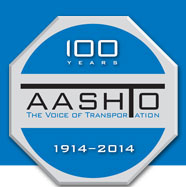
March 19, 2014
Did You Know?

A total of 27 states were represented at the first AASHO meeting at the Raleigh Hotel in Washington, D.C. on Dec. 12, 1914. Seventeen of the states were actually represented in person by either by their highway commissioners or engineers, however, and the remaining 10 were represented instead by proxy.
Henry G. Shirley was chief engineer of the Maryland State Roads Commission (forerunner of the present-day Maryland State Highway Administration) when he was elected AASHO's first president. A native of West Virginia, Shirley served in the Spanish-American War and had worked for various railroad companies as well as the District of Columbia's engineering department. In 1922, he was appointed Virginia's State Highway Commissioner and served in that position until his death in 1941. The Shirley Highway, a 17.3-mile segment of Interstates 95 and 395 and Virginia's first limited-access freeway, was named in his honor.
At 2:00 p.m. on the same day as AASHO's first official meeting, a delegation from that new association visited the White House. Those highway officials were received there by President Woodrow Wilson — "Roads Men Visit President," announced a headline in one west coast newspaper — and even posed in front of the White House for a group photograph.
While the establishment of AASHO was arguably a bright moment for many, the weather that greeted the association's "founding fathers" that December day was anything but ideal. President Wilson's cousin Helen Bones (who was serving at the time as official White House hostess following the death of First Lady Ellen Wilson) lamented in a Dec. 13 letter how they had been experiencing "the most horrible weather the past two weeks — damp, dark, cold, depressing!" As a matter of fact, the nation's capital had been experiencing what the Washington Herald newspaper called "its first real snowfall of the season" on December 11. Wilson nonetheless spent a good part of that snowy day playing golf at a local country club course with the White House physician. The Herald noted the next day that — barring any bulletins from the White House — it "was presumed that the Chief Executive suffered no ill effects from the exposure." And evidently he did not, since he was able to meet with the AASHO delegation.












